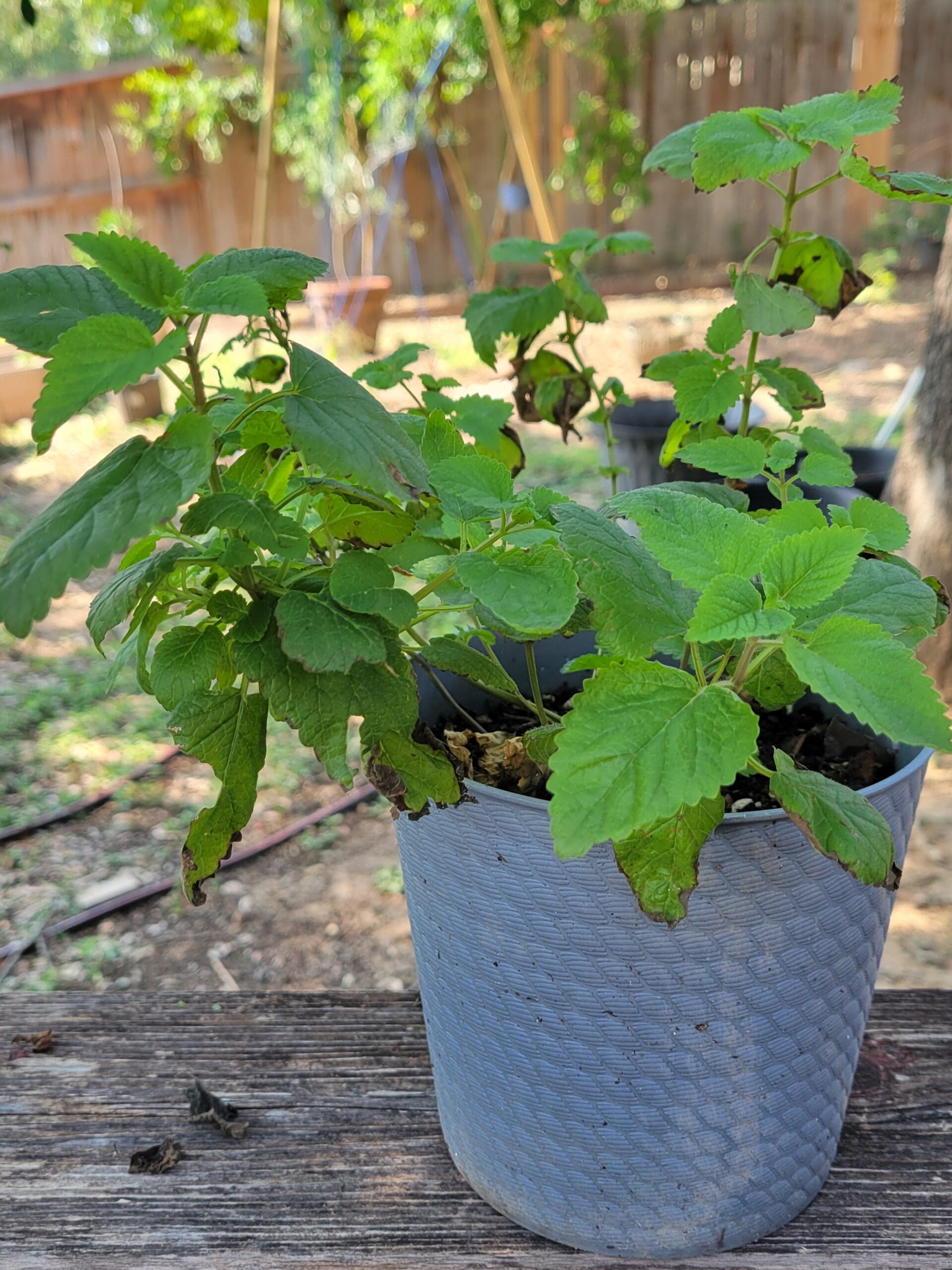Lemon Balm

A productive member of the Mint family, Lemon Balm is easy to grow in full sun to partial shade and average to even poor, well-drained soil. Water when the top 1in of soil is dry to the touch. Plants are drought tolerant once established. Be sure to contain your plant, as it tends to spread easily underground and from seed. Use the citrusy leaves in tea, summer drinks, or as a garnish. Lemon balm is valued as a culinary, cosmetic and medicinal herb. Use fresh sprigs to top drinks and as garnishes on salads and main dishes. The fresh or dried leaves make a great cold or hot tea, and the dried leaves can be used pot-pourri. Traditionally valued as a medicinal herb, lemon balm has mild sedative properties. Lemon balm is easy to grow from seed sown in the spring or early fall.
- No smaller than a 1/2 gallon pot.
- Plant height 24″ – 36″
- Keep the soil moist but not saturated, especially during dry spells. Plants need about 1 inch of rain per week during the growing season.
- Cut plants back by up to two-thirds after they bloom, about 40 days after emergence, to encourage new growth.
- Divide plants every year or two in spring or early fall to control their spread.
| Item | Description |
|---|---|
| Zone | 4 – 9 |
| Planting Season | Spring |
| Plant Depth | .25 |
| Fertilizer Type | 10-10-10 |
| Light Requirements | Light Sun |
| Fragrant | y |
| Edible Parts | All |
| Size | 24″ – 36″ |
| Foliage Color | Green |
| Fruit Color | N/A |
| Germination | 7 to 20 |
| Maturity | 70 to 80 |
| Spacing | 18″ – 24″ |
| Determinate/Indeterminate | Indeterminate |
| Hybrid/Open Pollinated | Open Pollinated |
| Genus | Melissa |
| Species | officinalis |
| Subspecies | Lemon Balm |
| Common Name | Lemon Balm |
- Sow tomato seeds indoors 6-8 weeks before the last frost in spring using a seed starting kit
- Sow seeds ¼ inch deep in seed-starting formula
- Keep the soil moist at 75 degrees F
- Seedlings emerge in 7-14 days
- As soon as seedlings emerge, provide plenty of light on a sunny windowsill or grow seedlings 3-4 inches beneath fluorescent plant lights turned on 16 hours per day, off for 8 hours at night. Raise the lights as the plants grow taller. Incandescent bulbs will not work for this process because they will get too hot. Most plants require a dark period to grow, do not leave lights on for 24 hours.
- Seedlings do not need much fertilizer, feed when they are 3-4 weeks old using a starter solution (half strength of a complete indoor houseplant food) according to manufacturer’s directions.
- If you are growing in small cells, you may need to transplant the seedlings to 3 or 4 inch pots when seedlings have at least 3 pairs of leaves before transplanting to the garden so they have enough room to develop strong roots
- Before planting in the garden, seedling plants need to be “hardened off”. Accustom young plants to outdoor conditions by moving them to a sheltered place outside for a week. Be sure to protect them from wind and hot sun at first. If frost threatens at night, cover or bring containers indoors, then take them out again in the morning. This hardening off process toughens the plant’s cell structure and reduces transplant shock and scalding.
- July 25, 2024 – After couple rain drenches, plant is thriving once again!
- July 20, 2024 – Transplanted to pot to try and save it
- July 2, 2024 – Plant struggles no matter how much water is given
- June 2, 2024 – Planted in Herb bed
- May 2, 2024 – Bought from Lowe’s ($3.33)
References


